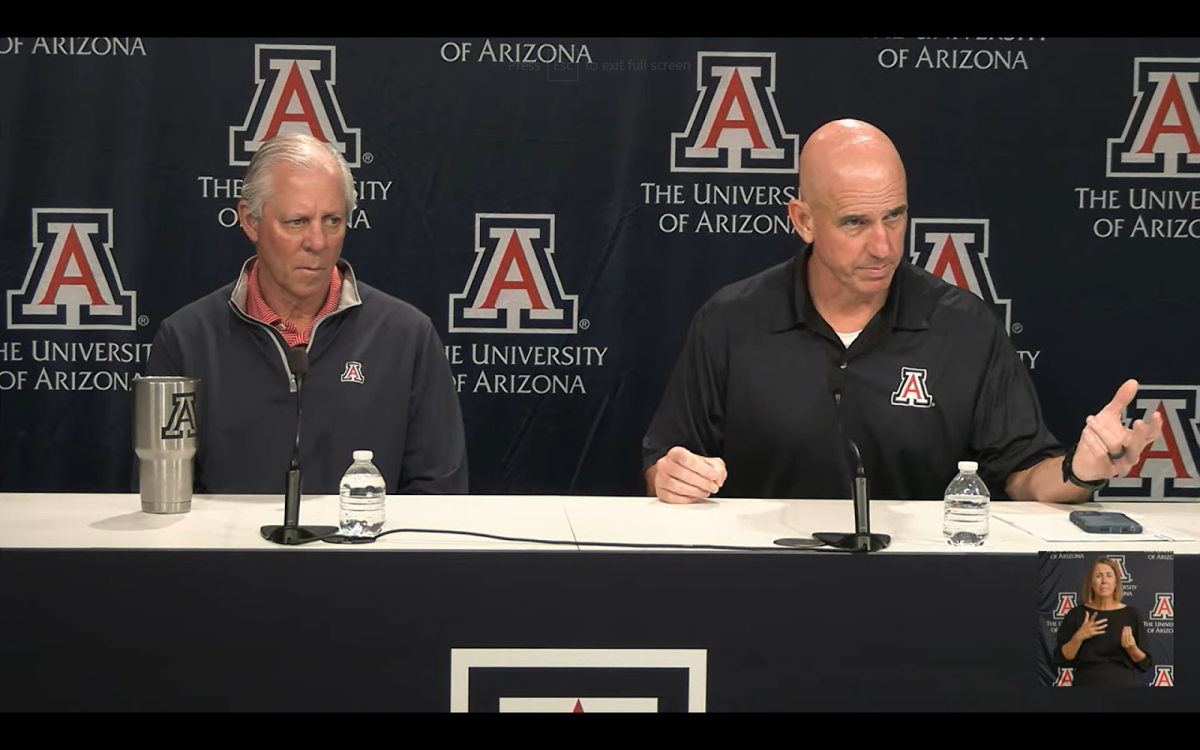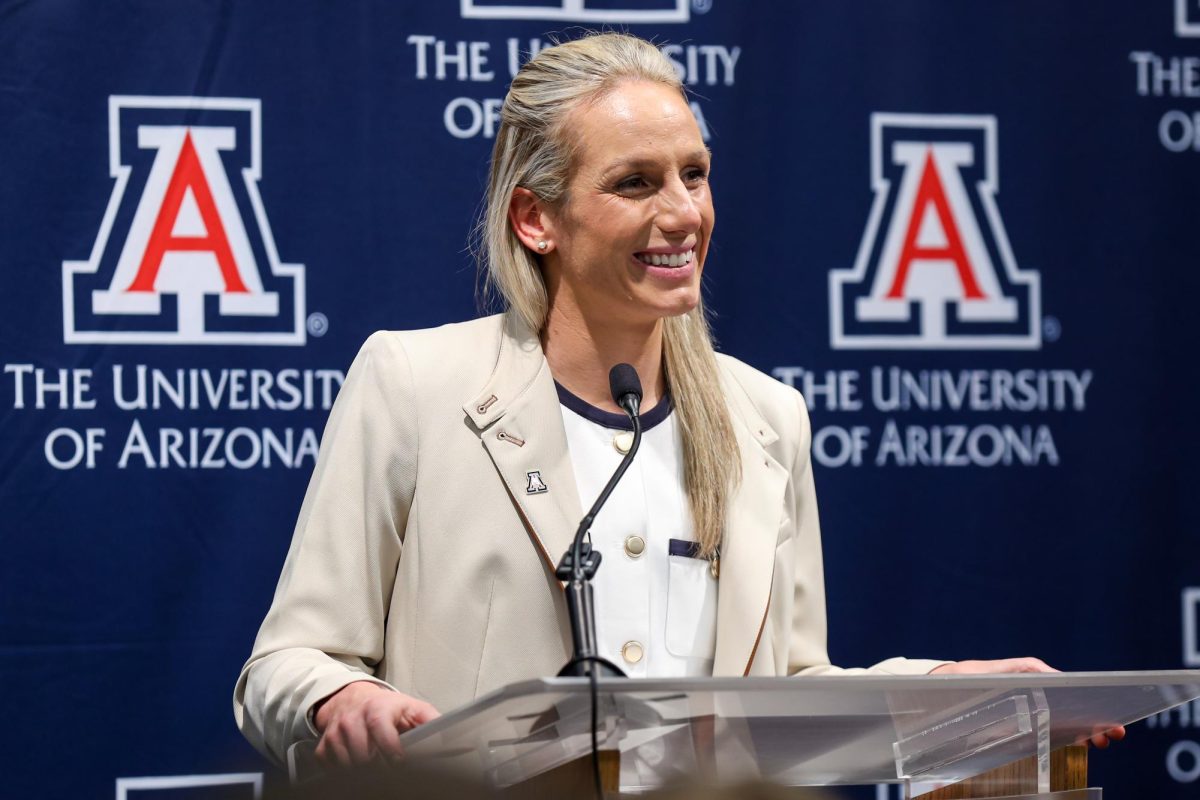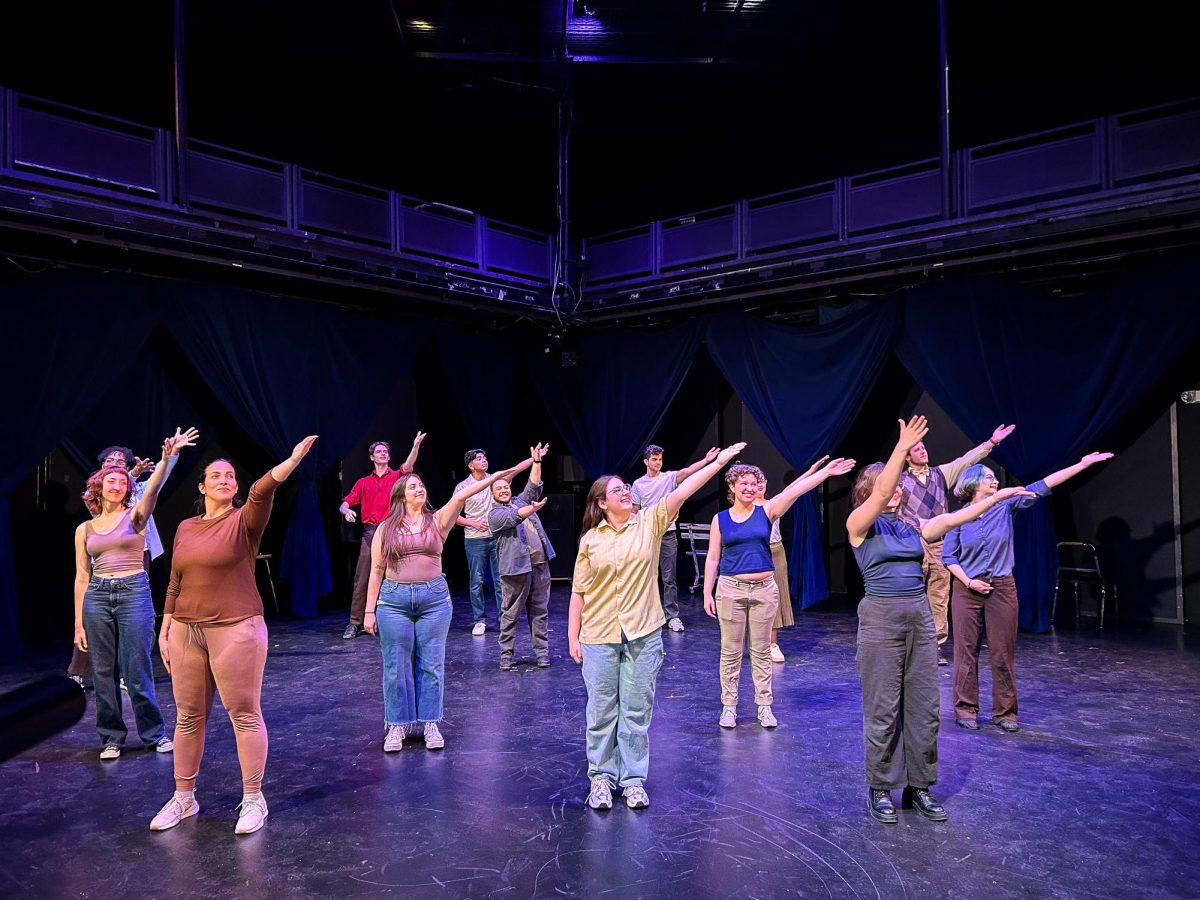Awareness and education were the main topics of discussion at a “Welcome Back” safety briefing held Friday morning by University of Arizona President Dr. Robert C. Robbins and Interim Vice President and Chief Safety Officer Steve Patterson.
The events of last year, specifically the on-campus shooting of a professor, left many students and faculty feeling unsafe and unsure of what to do in the case of emergencies. In response to this, some organizational changes and new additions to campus were made before students returned in the fall.
“My number one priority as president of the university — I’ve got many things to do — but number one is safety on campus,” Robbins said at the briefing.
Patterson and Robbins both stressed the importance of the new Wildcat Safety Guide. Inside the guide there are three sections: 911 & non-emergency numbers, university safety & wellness resources and emergency procedures.
The guide can be found on the new Office of Public Safety website. The website contains information about safety resources, an action plan about changes that will be implemented and a statement from Robbins on what’s to come.
The statement from Robbins is a promise to “implement the 33 recommendations included in the PAX Report, and track our progress on this website […], [continuously] review our campus safety response, particularly as it relates to Professor Meixner […], vigorously pursue necessary avenues to enhance community safety, relying on experts to advise us […] [and] remain steadfast in our commitment to all of you.”
Patterson shared at the safety briefing that over the summer “physical safety updates” were made, including locks on doors and access control.
“Really one of the things that I wanted to touch on was a lot of the work we’ve done with the awareness and education piece,” Patterson said.
Starting this academic year, all students will automatically be enrolled in the UAlert system without the chance to opt-out. UAlert allows those enrolled to be made aware of any major safety developments happening across campus. Patterson said these updates are to ensure clear and concise information is being conveyed.
Robbins recognized that the university was not as prepared as they should have been for the events that took place last October, and he also recognized that communication played a part in the failures as well.
“The PAX report outlined this pretty well so one thing that I made the decision to do, as [Patterson] said, was to bring all the resources under one office,” Robbins said. “And I think one of the biggest things that we had was a failure in communication, and so I think the communication is better now across the various stakeholders across this very complex campus and also the decision making process of threat assessment is better now as well.”
Patterson and Robbins referred to the campus community as a “force multiplier” for their efforts to increase communication with proper agencies. They shared that they are working to ensure that “everyone within the campus community feels very safe in asking questions, calling UAPD and making [Threat Assessment and Management Team] referrals.”
In terms of communication, Robbins also shared that there is a cultural change happening across campus when it comes to being comfortable sharing information with the proper agencies.
“I’m a big fan of a fair and just culture, and that comes from my previous life in medicine, where every voice is important, listened to and empowered to speak when they see problems or need help,” Robbins said. “ I think there is a cultural change that has happened since we established this office and put [out] more resources to encourage people to be aware and educated.”
The 2023-24 academic year has just begun and campus security is an important aspect of campus. Robbins and Patterson are working to make sure that “everyone who steps foot on campus,” Robbins said, feels safe and knows the proper ways to report any situations that may be deemed a threat.
Follow the Daily Wildcat on Instagram and Twitter/X
















